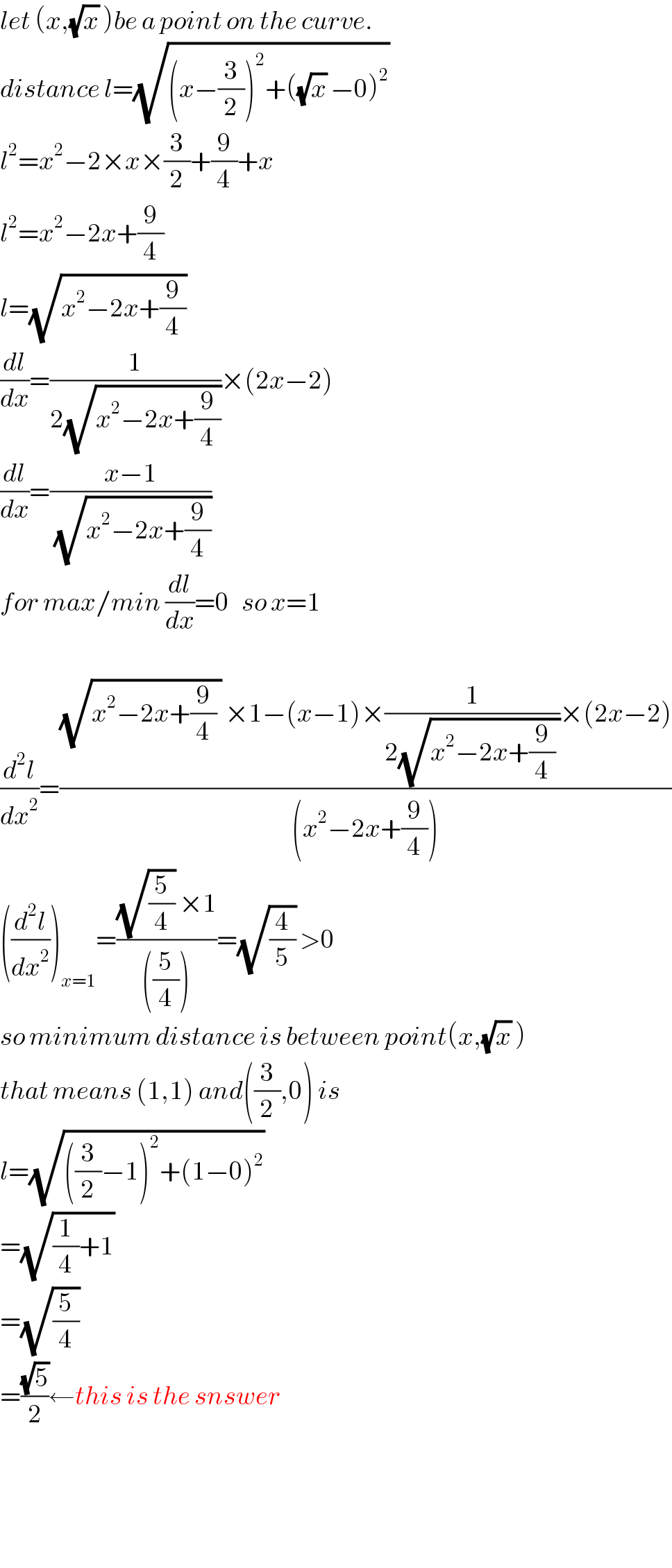
Question and Answers Forum
Question Number 56914 by rahul 19 last updated on 26/Mar/19

Answered by Smail last updated on 26/Mar/19

Commented byrahul 19 last updated on 26/Mar/19
thank you sir!
Answered by tanmay.chaudhury50@gmail.com last updated on 26/Mar/19

Commented byrahul 19 last updated on 26/Mar/19
thank you sir!
Answered by mr W last updated on 26/Mar/19

Commented byrahul 19 last updated on 26/Mar/19
thank you sir!
